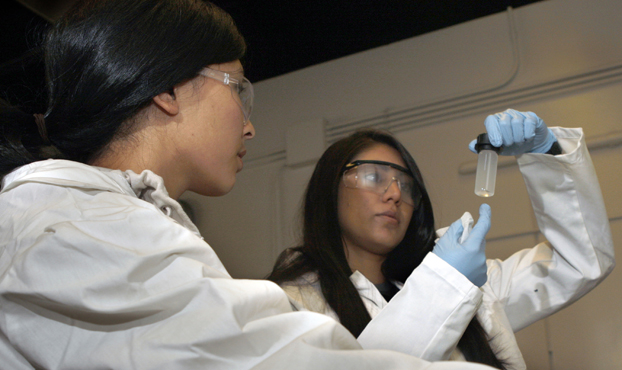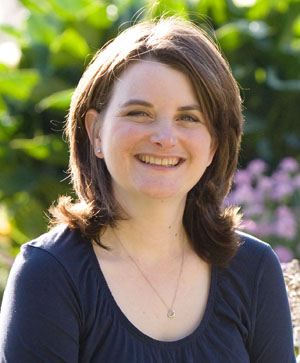 Caption: Education faculty member Karen Kim received an NSF grant to recruit and retain women students like Tsering Wangden and Tanya Samra for careers in engineering and computer science. Photo: Karen Tapia Download
Caption: Education faculty member Karen Kim received an NSF grant to recruit and retain women students like Tsering Wangden and Tanya Samra for careers in engineering and computer science. Photo: Karen Tapia Download
Keeping Women in Engineering and Computing
New Research Focuses on Recruitment and Retention
Feb. 14, 2012
Karen Kim wants to know how women’s experiences as undergraduates can encourage them to pursue further education and careers in computer science and engineering — in efforts to boost the numbers of females in these underrepresented fields.
To find these answers, Kim, co-director of the College of Education’s Center for Research on Educational Access and Leadership, is working on a collaborative research project focusing on increasing women’s interest and retention in computer science and engineering. The research is underwritten by a three-year National Science Foundation grant; first-year funding is $81,284.
“Despite recent progress, our nation is facing a growing need for engineers and computer scientists, and women continue to be underrepresented in computer science and engineering departments at universities across the country,” said Kim, who is working with Laura Portnoi, Long Beach State associate professor of advanced studies in education and counseling, who received a separate NSF grant for the joint project.
Also working on the project is CSUF graduate education student Sarah Peterson, who is planning a career in higher education. Peterson said is excited to work on the project since it will give her valuable research experience that can help in her graduate work, and later, when she pursues a doctorate. She hopes the study will help incite more women to consider the sciences and engineering as career options.
“I’m hoping the study will identify support services they need to improve their college experiences, graduate and get jobs in these professions,” Peterson said.
For Kim, the motivating factor for the study is the low percentage of women pursuing science, technology, engineering and mathematics disciplines across the nation, especially computer science and engineering. The focus of the study also reflects the university's renewed emphasis on increasing student interest in the STEM disciplines.
 Caption: Tanya Samra works with other classmates in the engineering lab. Photo: Karen Tapia Download Photo
Caption: Tanya Samra works with other classmates in the engineering lab. Photo: Karen Tapia Download Photo
“Through this study, we’re trying to find the common components that undergraduate women perceive as motivating them to pursue education and careers in computer science and engineering,” Kim explained. “We want to find out what works in retaining women in these fields — so more young women see the opportunities that are available with a computer science or engineering degree.”
Begun last fall, the project involves six case-study institutions. Names of participating universities are not being released in order to protect the integrity of the research.
At each institution, the researchers are looking at how undergraduate experiences in computer science and engineering departments influence women's educational and career paths, said Kim, who teaches in the Educational Leadership Department.
In an effort to increase the numbers and diversity of students pursuing education and careers in computer science and engineering, university departments nationwide are looking for ways to revise their curricula to attract more students, particularly women, to computing fields, Kim added.
The research study is a multiphased approach involving about 120 female and male engineering and computer science majors in their sophomore year and following them with extensive interviews and observations over the three-year period. Interviews with faculty members and administrators, such as deans and other academic stakeholders, will be included in the study.
The study will build on past research, which has shown that young women in computer science and engineering majors benefit from involvement in curricular and extra-curricular activities, Kim noted. “These include activities, such as paired programming and research experiences, are collaborative and connected to other fields and broader social contexts.”

